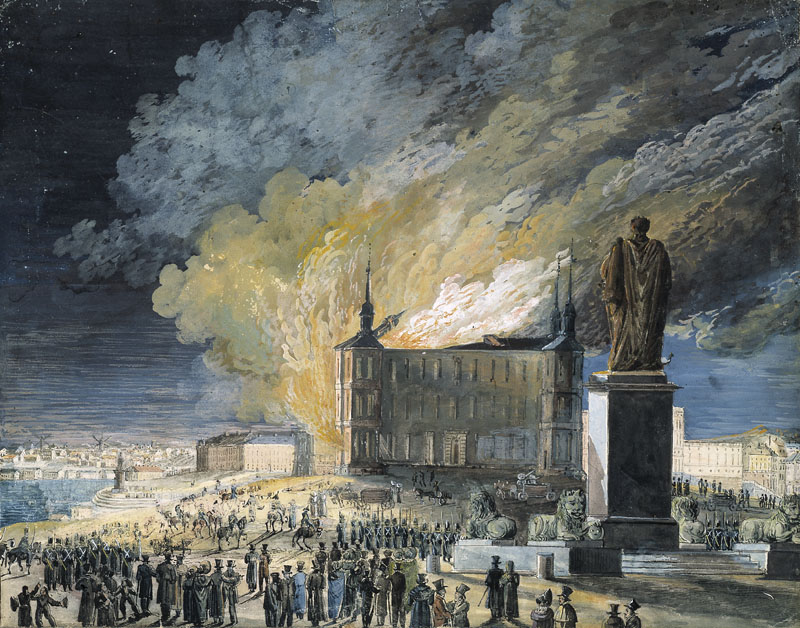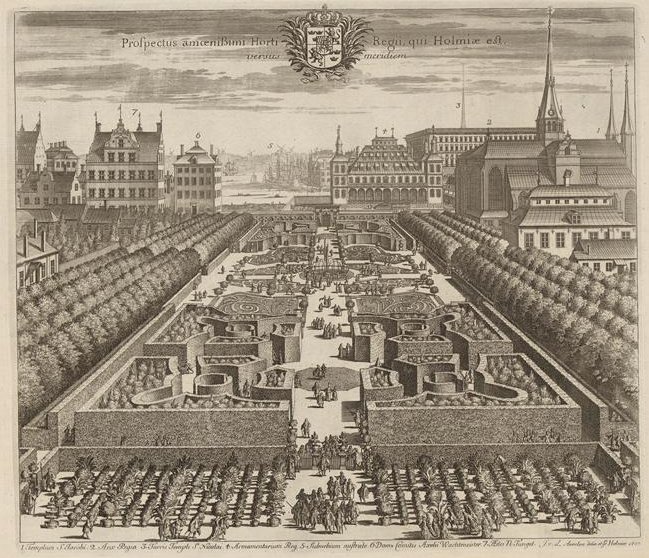November 24 in Swedish history
-
 On November 24 in 1825, Palace Makalös in central Stockholm burns down. Painting by Axel Fredrik Cederholm called ”Palatset Makalös brand 24/11 1825”.
On November 24 in 1825, Palace Makalös in central Stockholm burns down. Painting by Axel Fredrik Cederholm called ”Palatset Makalös brand 24/11 1825”. -
-
November 24 in Swedish history
1825: The palace Makalös (a name that means ”peerless”) burns down. Makalös is located in Kungsträdgården (the King's Garden in Stockholm's city center), at what is now Karl XII:s torg, in Stockholm. The palace had been built between 1635-1643, per order of Field Marshal and Count Jacob Pontusson De la Gardie (1583-1652), who had contracted the buildmaster Hans Jacob Kristler either from Strasbourg or Torun. The palace rested on 18,000 wooden poles, was five stories high, with a gazebo on the very top. It was built in brick and stone and had a copper roof with four towers and a stairway leading down to the water. The portals were decorated with canons, and the entire building was richly decorated with sculptures, window ornaments, cartouches, and mascarons. Inside there were stucco, paintings, tapestries, and stone work fireplaces, as well as numerous portraits of contemporary royalties. -
 This engraving from Suecia Antiqua et Hodierna shows Kungsträdgården facing south towards Norrström. Makalös is depicted near the centre of the image, Saint James's church to the right, and the Royal palace in the background.
This engraving from Suecia Antiqua et Hodierna shows Kungsträdgården facing south towards Norrström. Makalös is depicted near the centre of the image, Saint James's church to the right, and the Royal palace in the background. -
-
With its many bays, the palace stuck out among its meager surroundings. Although the mansion was colloquially known as "Makalös", the De la Gardie family referred to it exclusively as ”Stora huset” (the big house). Eventually the palace came under the ownership of the crown, and was used as a warehouse. Later still, King Gustav III decided to use it as a theater.
-
On that day in late November, 1825, a fire broke out during a performance of "Redlighetens seger öfver förtalet" by Kotzebues. Actor Lars Hjortsberg informed the audience of the fire from the stage, asking them to leave the building. All spectators were safely evacuated, though three employees died in the fire. A number of stone sculptures were saved, some of which were incorporated into private mansions, and others ended up in several museums, such as the Nordic Museum. A number of artifacts are exhibited at the Stockholm Metro's Kungsträdgården station, close to the former location of Makalös.
-
-
-
